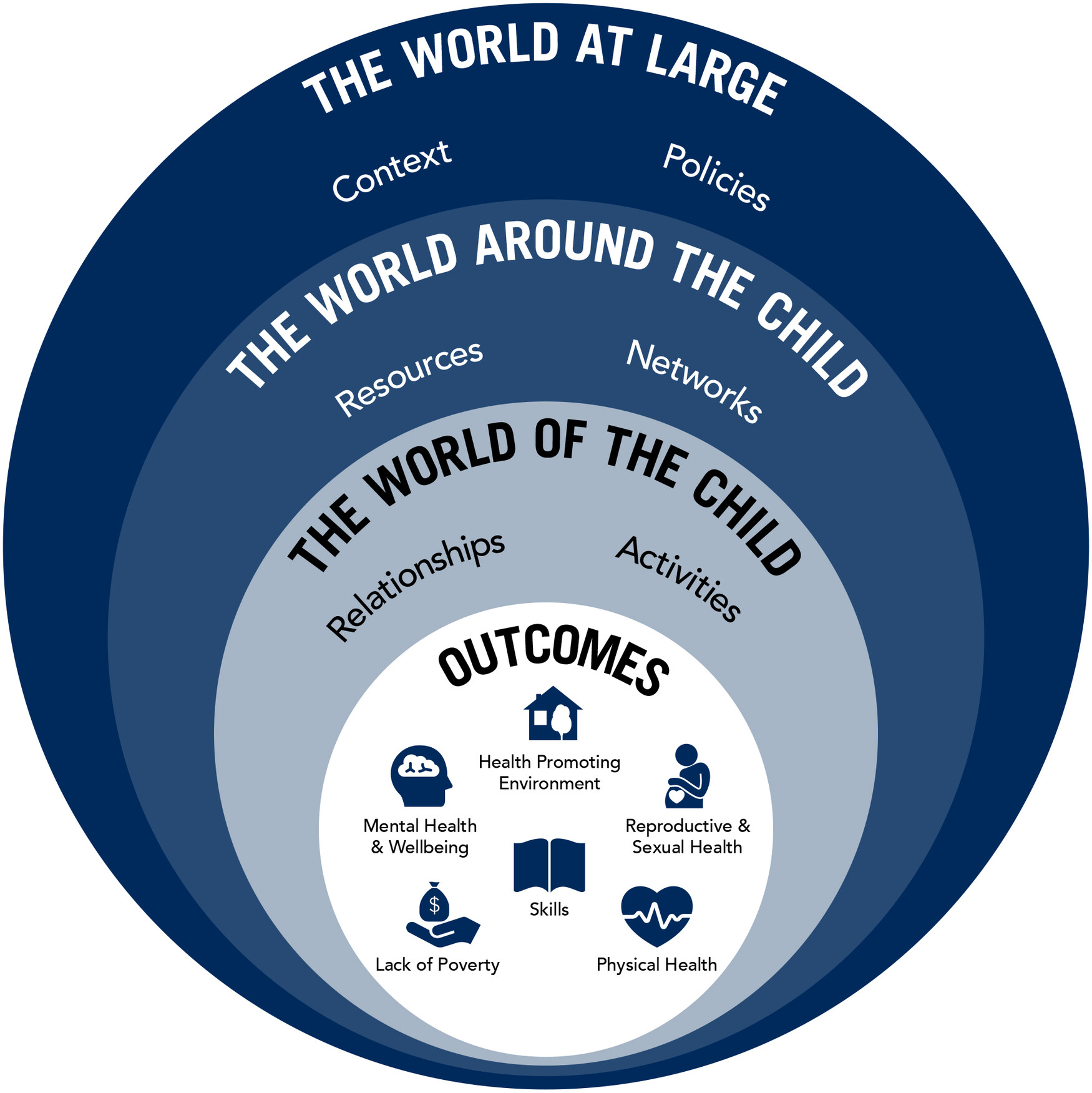Main Second Level Navigation
Conceptual Framework for Child Flourishing in Canada
Childhood is an important developmental period that can make a lasting impact on a person’s health and well-being. Children are particularly susceptible to external influences on their development, known as the social determinants of health (SDOH), which can differ significantly between and within populations. This variability can have a greater effect on children from vulnerable populations more than their advantaged peers, leading to inequitable health and well-being throughout the lifespan.
Our mission to “promote the flourishing of every child and family” is a broad goal that needs to be qualified in order to identify opportunities and implement interventions for sustainable impact. We have developed a conceptual framework to guide our work, centered around the cultural and socio-political context that represents the experience of Canadian children. By thinking about child health research questions in terms of our conceptual framework, we hope to work together to improve the health and well-being of all Canadian children and their families.
Framework Development & Adaptation
The Conceptual Framework for Child Flourishing in Canada was adapted from two key documents: UNICEF Innocenti Report Card (2020) and a WHO-UNICEF-Lancet Commission (2020). These documents focus on the well-being of children in terms of factors in their environment that can support surviving & thriving, and examine how such interactions influence their development.
This Framework is grounded in an equity approach to SDOH, which is essential to ensure that efforts to promote children’s present and future flourishing is for all children. It was further adapted to be applicable in the Canadian context, as a high-income country with health indicators that can differ from low-and-middle income countries. Indices that were included from the Commission’s 'Child Flourishing Index' were those which focused on a child’s best chance for survival and well-being in Canada. We also chose to broaden maternal factors to include all caregivers, and the corresponding flourishing indicator has thus been renamed "parental health & morbidity".
Navigating the Framework
With the child and their outcomes at the heart of this model, individual outcomes are influenced by social determinants; the conditions in which individuals are born, grow, work, live, and age which are shaped by forces and systems including economic policies and systems, development agendas, social norms, social policies and political systems. Social determinants can be viewed through overlapping spheres or perspectives, referred to as the world at large, the world around the child, the world of the child.

References
1. UNICEF Innocenti, ‘Worlds of Influence: Understanding what shapes child well-being in rich countries’, Innocenti Report Card 16, UNICEF Office of Research – Innocenti, Florence, 2020. Available online from: https://www.unicef-irc.org/publications/pdf/Report-Card-16-Worlds-of-Influence-child-wellbeing.pdf
2. Bronfenbrenner, U. (1979). The ecology of human development: Experiments by nature and design. Cambridge, Mass: Harvard University Press.
3. Clark H, Coll-Seck AM, Banerjee A et al. A future for the world's children? A WHO-UNICEF-Lancet Commission. Lancet. 2020; 395: 605-658. Available online from: https://www.thelancet.com/action/showPdf?pii=S0140-6736%2819%2932540-1
